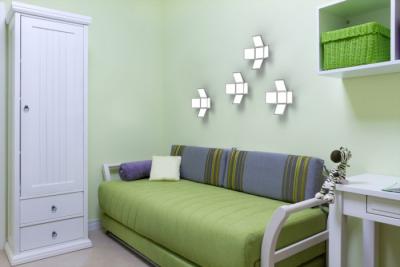A few days ago, the US Energy Department (DoE) announced its tenth round of efficient SSL lighting awards, awarding more than $8.2 million to nine projects. Today the DoE released more details about the projects it awarded in this round. There are four OLED projects, awarded a total of $3.8 million.

Acuity Brands received $455,131 to develop an OLED Luminaire with integrated DC current drivers in each panel and advanced controls. The goal is to demonstrate a luminaire with an efficacy of 65 lm/W and a luminous output of 4,000 lumens.
Arizona State University received $700,000 to develop an efficient and stable phosphorescent material, quick-screen it and incorporate it into a state-of-the-art OLED. The goal is to develop efficient and stable white OLEDs employing a single emissive material.
California's Sinovia Technologies received $1.3 million to develop a plastic OLED lighting substrate that is made from a barrier film technology with a nanowire transparent conduction film. The substrate will improve light extraction while lowering the price of the OLED down. The goal is to demonstrate a substrate/encapsulation technology that features than 1 ohm/sq. resistivity, greater than 50% light extraction, and under the target cost of $95/m2.
The University of Michigan received $1.3 million to increase the lifetime of blue phosphorescent OLEDs (PHOLEDs). They will use a computationally-directed reduced molecular dissociation approach to efficiently identify robust blue phosphorescent dopant and host molecular pairs. The goals will be to fabricate a white PHOLED on a size-scalable platform with 70 lm/W efficacy, a CRI of 85 and a color temperature of 2750K.

